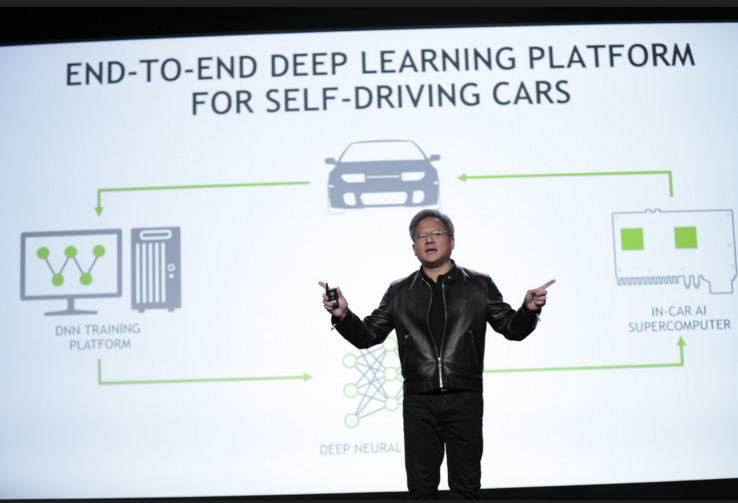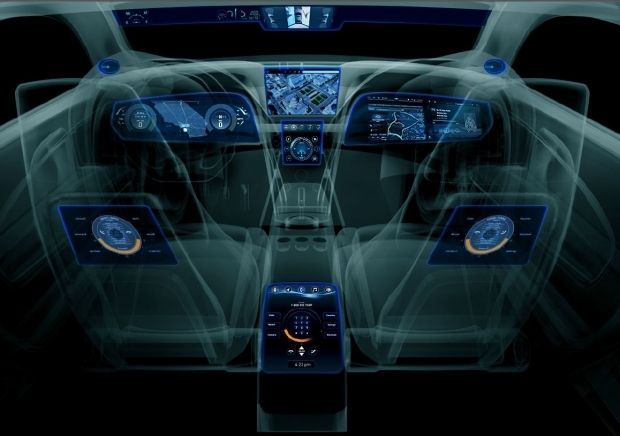The money could be better, but Nvidia plans to make much more out of automotive in 2016 and beyond. We were assured that by 2020, self-driving cars based on Nvidia technology under the bonnet, will be commercially available. Many manufactures, including Tesla, BMW, and Audi, offer limited self-drive capabilities. Some of their cars can operate autonomously on highways, but not in cities.
Nvidia said it is working with 70 car manufacturers that are developing self-driving car technologies. Nvidia claims its DRIVE PX 2 has generated enormous interest around the world from carmakers and Tier 1 automotive tech suppliers.
Car design cycles take years, and the company expects many cars powered by Nvidia's automotive solutions will show up this year. Nvidia already told investors in August 2015 that its chips have ended up in 30 million cars. In other words, most of the company's Tegra-based automotive SoCs are selling in automotive infotainment systems.
Car manufacturers including Volkswagen [No CO2 joke needed. Ed] use Nvidia chips for their for infotainment systems, and some manufacturers, including Audi and Tesla, are still using ancient Nvidia mobile GPUs in their dashboards. This is enough to make $93 million. There is no doubt that 2016 will yield better sales.
King and CEO of Nvidia Jen Hsun Huang told investors and the world that:
"Volvo, well-known for its safety and reliability, will be the first to develop DRIVE PX 2, using it as the brain for its fleet of 100 self-driving cars to be publicly available next year in its hometown of Gothenburg, Sweden. "
DRIVE PX 2 contains two Pascal-based SoCs (codenamed Parker), are acting as a quasi-supercomputer. More specifically, this supercomputer platform is the size of a lunchbox and can manage to processes 24 trillion deep learning operations a second, delivering eight teraflops of processing power in the process. This is roughly equivalent to the power of 150 MacBook Pros.
Nvidia's dual Pascal-based DRIVE PX 2 can use up to four SoCs and can be a passively cooled, or water-cooled. Car manufactures know all there is to know about water cooling, as they have been using H2O cooling in their engines for more than a century.
Volvo plans to use DRIVE PX 2 for its self driving capabilities. Nvidia provides hardware and software that can fuse data from cameras, lidar (light ray shooting radar), radar, and ultrasonic sensors, to create a full 360-degree picture of what is happening around the vehicle. You obviously need an incredible amount of processing power to make sense of all that data.
Additionally, the DRIVE PX 2 module localises the vehicle on an HD map and determines a safe path forward using deep learning techniques. This is why the German car manufacturers acquired HERE maps from Nokia, just to be independent from Google.
Unfortunately, Volvo will only have a developer edition of the DRIVE PX 2 for its self-driving automotive trials in 2017 and it might take years before it becomes commercially available. The 2020 timeframe probably means that some expensive cars including Tesla or expensive BMW, Audi, Mercedes and Cadillacs will get self-driving treatment, but at a high price. Most entry-level to mid-range cars sell for between € / $20,000 and € / $30,000 and it will probably take a bit longer than 2020 to get self-driving vehicles into this price range.
Jensen reminded investors a few weeks ago that the WEpod, the first autonomous shuttle, incorporates Nvidia's deep learning platform and took its inaugural trip on public roads in the Netherlands, where it can be summoned with a smartphone app.
There is no doubt that future of automotive is self-driving, but we are still a few years away at this point.




